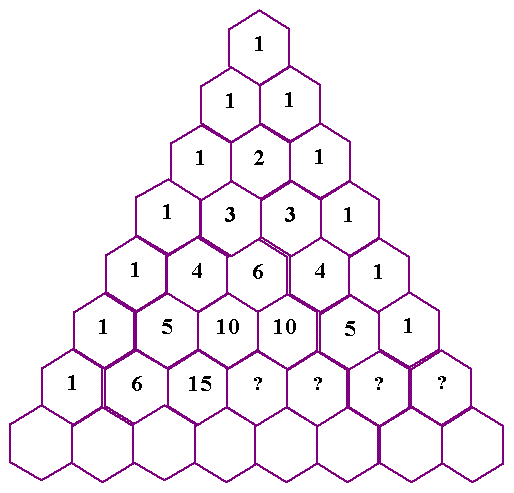Or search by topic
Number and algebra
Geometry and measure
Probability and statistics
Working mathematically
Advanced mathematics
For younger learners
Published 2011 Revised 2021
Pascal's Triangle
This special triangular number arrangement is named after Blaise Pascal.
Pascal was a French mathematician who lived during the seventeenth century. His father would not allow him to have mathematics lessons when he was young so he taught himself. When he was nineteen he invented the first digital calculator to help his father collect taxes, it is known as Blaise Pascal's Arithmetic Machine . But it is his triangle of numbers that he is usually remembered for.
On the triangle below, fill in the missing numbers on the bottom row. What numbers would go into the next row?

There are many number sequences and patterns to be found within the pathways of numbers through the triangle and in the rows of numbers. As well as the natural or counting sequence the square numbers are in there, so are triangular numbers and patterns relating to exponents of two and eleven. Can you find some of them? Use this link if you are interested in Exploring Pascal's Triangle .

